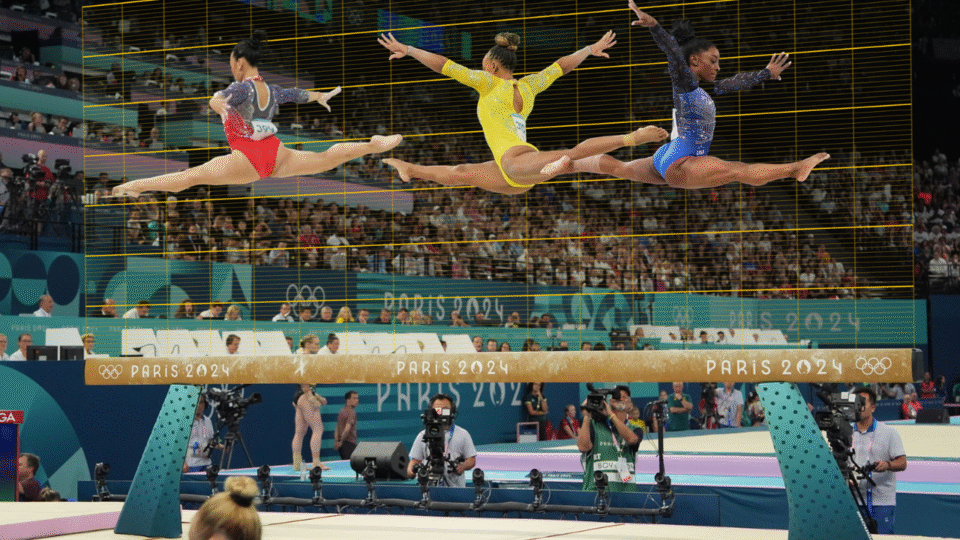The balance beam is one of the most iconic apparatuses in gymnastics. Standing just 10 centimeters (about 4 inches) wide and 1.25 meters (roughly 4 feet) high, the beam demands a combination of strength, precision, agility, and grace. What looks effortless on TV is actually the result of years of practice and intense focus.
What Is the Balance Beam?
The balance beam, often simply called “the beam,” is a narrow, padded platform used exclusively in women’s artistic gymnastics. It’s 5 meters (16 feet, 5 inches) long and covered in leather or synthetic suede to provide grip while allowing smooth movement.
In competitions, routines on the beam last up to 90 seconds and must include acrobatic skills, leaps, turns, and a dismount. Judges score performances based on difficulty, execution, artistry, and overall composition.
History and Evolution
The balance beam has been a part of women’s gymnastics since it was first included in the Olympic Games in 1936. Over the decades, the complexity of routines has grown significantly. Early beam routines focused more on dance elements and simple poses, but modern routines are packed with backflips, aerials, and intricate combinations. The apparatus itself has also evolved—modern beams are sprung and padded, making them safer and more performance-friendly than the wooden beams of the past.
Key Skills and Elements
To excel on the balance beam, gymnasts must master a range of skills. These fall into several categories:
- Acrobatic skills: Back handsprings, front aerials, back tucks
- Dance elements: Split leaps, switch leaps, turns (like the full turn or wolf turn)
- Connections: Linking elements together to increase difficulty and earn connection bonuses
- Dismounts: Saltos or twisting moves performed at the end of the beam routine
Each routine must meet specific composition requirements outlined by the Code of Points, the rulebook for gymnastics judging.
Training for the Beam
Beam training begins with basics: walking forward and backward, holding balances, and performing simple jumps. As gymnasts improve, they transition to more advanced elements and combinations. Coaches often use low beams or floor lines before athletes move to the competition-height beam.
Mental training is just as crucial. The beam can be intimidating due to its narrow surface and elevated height. Visualization, breathing techniques, and mental toughness drills are standard parts of training.
Common Mistakes and Challenges
- Wobbles and balance checks: Small losses of balance that lead to deductions.
- Falls: Each fall results in a full point deduction in competition.
- Incomplete elements: Skills not fully rotated or turned are penalized.
- Inconsistent rhythm: Pausing too long between elements breaks the flow and can incur deductions.
Overcoming these challenges requires consistency, confidence, and attention to detail.
Notable Beam Performances
Some of the most memorable Olympic gymnastics moments have happened on the beam. Athletes like Nadia Comăneci, Simone Biles, and Liu Xuan have redefined what’s possible on the apparatus. Biles, in particular, is known for pushing the boundaries of difficulty with skills like the double-double dismount.
Tips for Aspiring Gymnasts
- Perfect the basics: Solid fundamentals set the stage for advanced skills.
- Be patient: Progress on beam takes time. Frustration is normal.
- Focus on form: Clean lines and pointed toes matter.
- Practice under pressure: Simulate competition conditions in training.
- Build mental strength: Confidence is key to success on beam.
Final Thoughts
The balance beam is more than a test of physical skill—it’s a mental and emotional challenge that demands discipline and courage. For those who master it, the reward is not just medals, but a deep sense of personal achievement. Whether you’re a gymnast, coach, or fan, understanding the intricacies of the beam adds a new level of appreciation for the sport of gymnastics.

